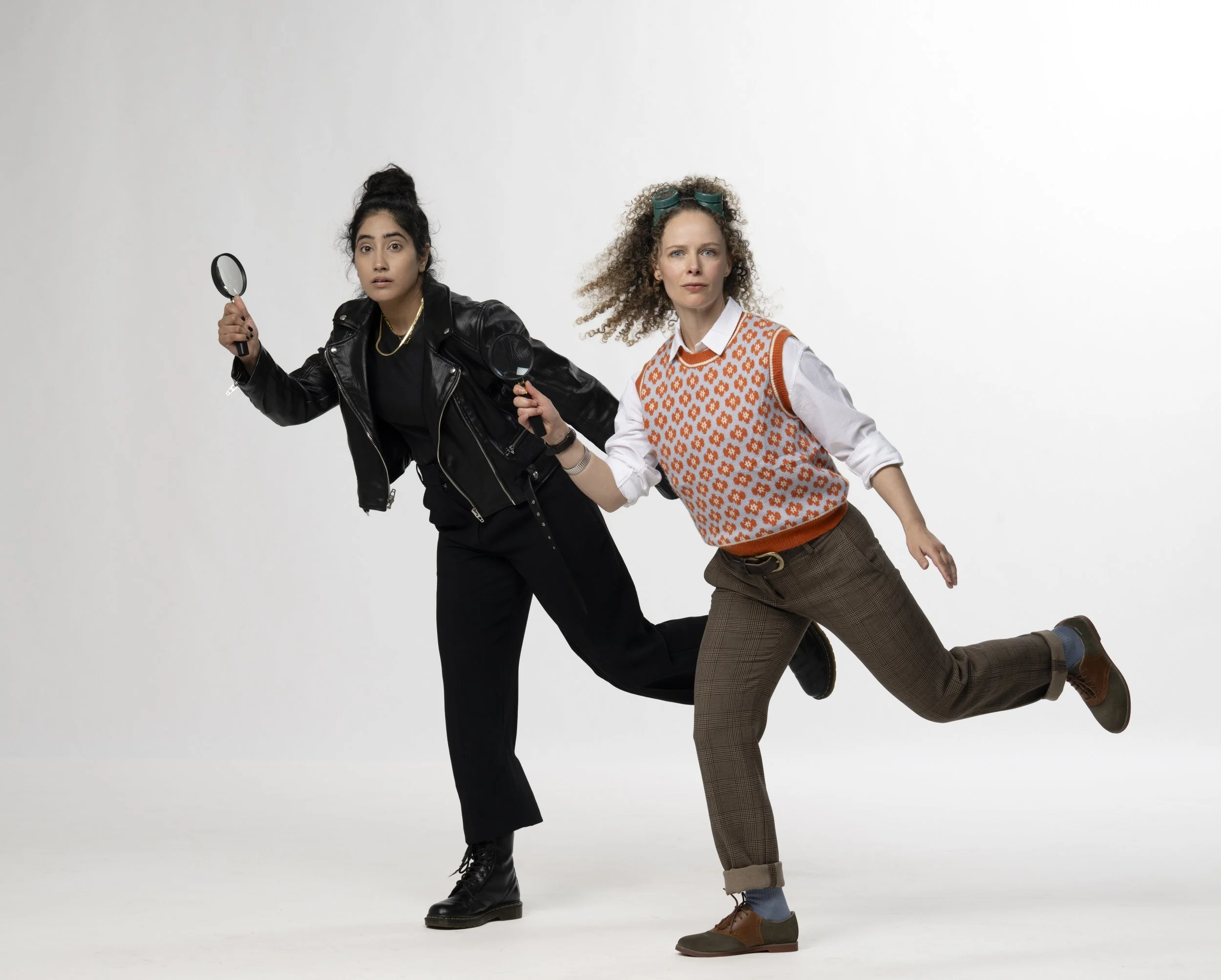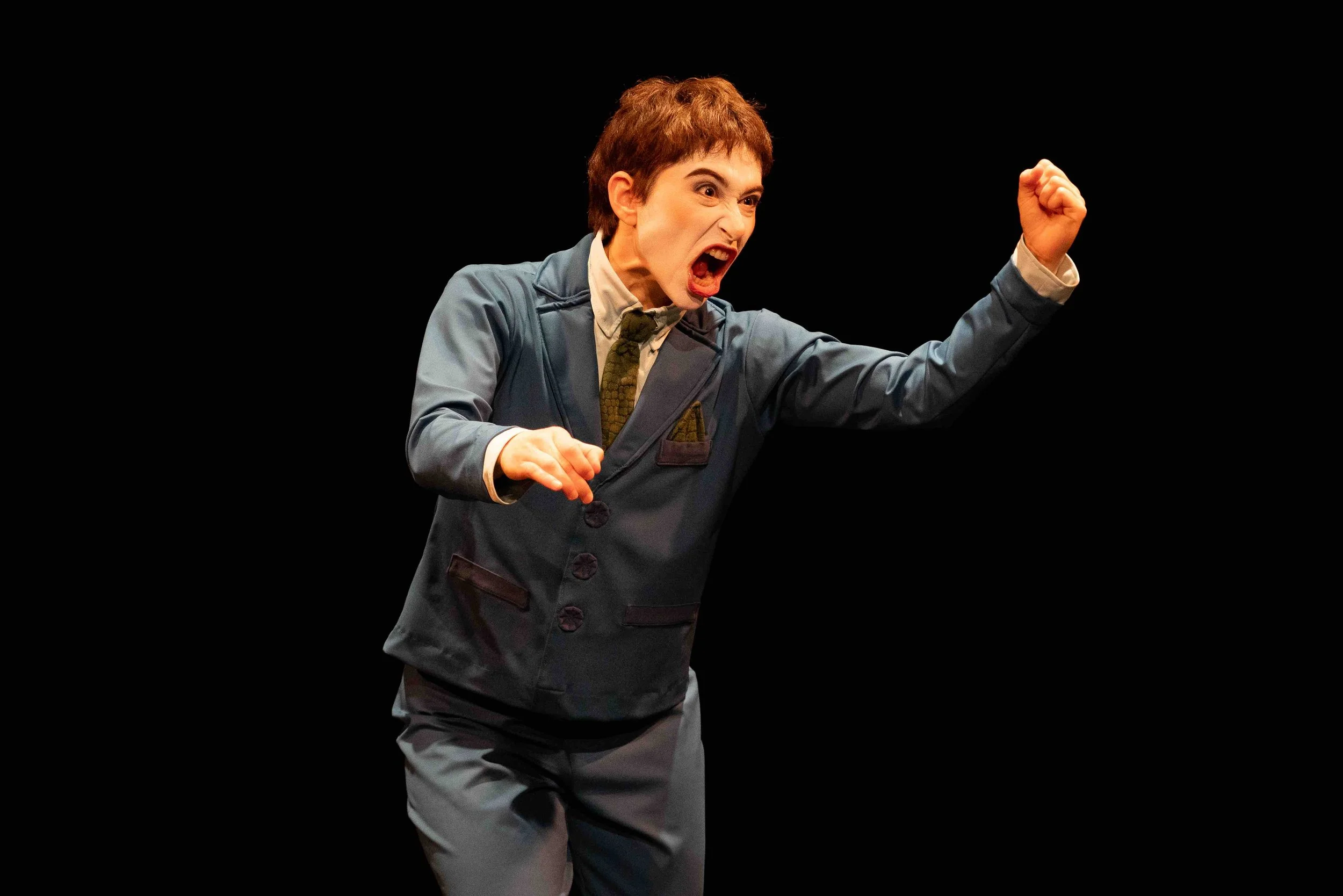Kate Hamill’s Ms. Holmes & Ms. Watson – Apt. 2B puts a feminist spin on the iconic detective duo
Despite the play’s modern twist, fans of Arthur Conan Doyle will find plenty of familiar nods to the source material
Kate Besworth (right) and Rami Kahlon in Ms. Holmes & Ms. Watson. Photo by David Cooper
Gateway Theatre presents Ms. Holmes & Ms. Watson – Apt. 2B from October 16 to 25
REINVENTION IS practically tradition when it comes to Sherlock Holmes.
In recent decades, we’ve seen various successful takes on the iconic duo of the intrepid sleuth and his friend and confidant Dr. John Watson. Consider Robert Downey Jr. and Jude Law’s action-hero version in 2009 and Benedict Cumberbatch and Martin Freeman’s cerebral interpretation a year later (which this author remembers being a favourite for Tumblr shippers in the late 2010s). And there have been less than successful takes, like Will Ferrell and John C. Reilly’s 2018 misfire. Let’s not go there.
In fact, according to Guinness World Records, until being edged out by Bram Stoker’s Dracula in 2012, Sherlock Holmes held the title of most-adapted fictional character.
So where does that leave the world-renowned detective in the 2020s?
Enter playwright Kate Hamill, no stranger to taking literary classics and updating them with wit and edge. In Ms. Holmes & Ms. Watson – Apt. 2B, which opens Gateway Theatre’s 2025-26 main-stage season, Holmes and Watson are reborn once again, this time as two modern-day women sharing an apartment on Baker Street.
Directed by Lauren Taylor, this B.C. premiere follows the brilliant, unconventional Sherlock Holmes (Kate Besworth) and her steadfast partner Dr. Joan Watson (Rami Kahlon) as they unravel a series of interconnected crimes, culminating in a face-off with Holmes’s most formidable foe.
Last season, Gateway Theatre brought Hamill’s Pride & Prejudice to the stage, with Besworth playing Lizzy Bennet. Having stepped into Hamill’s world once again this year, Besworth praises the playwright’s sharp humour and the “extraordinary amount of wit” baked into the script.
“The pace is breakneck,” she says. “So, as a performer, it feels quite athletic to undertake these feats. Intellectually, I'm always really excited about adaptation as a concept in terms of taking something and making it new while retaining the core things that made an audience enjoy it in the first place.”
The result is a Holmes and Watson who are both instantly familiar and entirely new. Gone is the “fairer sex” stereotype, and with it, some of the original baggage. In Arthur Conan Doyle’s time, Holmes was famously cold toward women, even declaring in The Sign of Four: “Women are never to be entirely trusted—not the best of them.”
Not so in Hamill’s world.
“It definitely offers a three-dimensional view of women,” says Kahlon. “Both Joan Watson and Sherlock Holmes, they have a life outside of the stereotype that they are living. So they can be emotional, but they can also be very, very strong and smart and very unemotional at times. Both of them.”
Besworth adds: “I don't necessarily think Kate Hamill has written the characters as women. I think she has written the characters more so in a modern age. For me, that's the biggest translation in the adaptation. They're modern characters, and they happen to be women.”
That’s not to say everything fans know and love about the original stories has been tossed out. On the contrary, devotees of Doyle’s canon will find plenty to enjoy. Hamill’s script is peppered with clever nods and references that reward the die-hard fans.
“There’s so many little tidbits that people would recognize,” Kahlon says. From Easter eggs tied to the original short stories to the dynamics between the central duo, longtime Sherlockians will feel right at home. And while Holmes still plays the role of the cool, analytical outsider, this version also gives Watson space to shine.
“Hamill brings something so specific and unique—which I don't want to give away—to the character of Watson, and that is her own emotional journey and her own reasoning to be closed-off to the world,” Kahlon explains. “We always think that Sherlock Holmes is the outsider, but here, we see Watson really being the outsider as well.”
And while the production stops short of full-on audience participation, it doesn’t shy away from breaking the fourth wall when the moment calls for it.
“I would definitely say that they will be addressed, they will be winked to, they will be nodded at, they will be invited to laugh,” Besworth says. “That fourth-wall–breaking happens specifically with one character more than the rest. But we don't want to give away who that is, of course.”
In addition to Besworth and Kahlon, the cast includes Anita Wittenberg, moving between several roles, including Irene Adler, Mrs. Hudson, and Mrs. Drebber; and Mark Chavez, taking on characters including Inspector Lestrade and Elliott Monk.
But the real engine behind the show’s momentum might just be the backstage crew. The set, described by the cast as a “choose-your-own-adventure” maze, plays a key role in supporting the production’s fast pace. “It’s the most prop-heavy show I’ve ever done,” says Besworth, giving credit to stage managers Angela Beaulieu and Devon Vecchio for keeping it all running smoothly.
“I’m excited for [audiences] to join us on this ride,” says Besworth. “It's a very athletic production. It moves fast. The ideas are engaging and complicated. And if they want to lean forward and join us, I think it'll feel thrilling. It should feel exciting. They should get a vicarious rush from the rush that we're experiencing onstage.”
At its core, Ms. Holmes & Ms. Watson – Apt. 2B is more than a smart, modern remake. It’s a joyful celebration of live theatre.
Kahlon puts it simply: “It’s a happy show. It’s a love letter to invite people to just have a good time, forget about all the bad things that are happening, and just join us for fun.” ![]()













